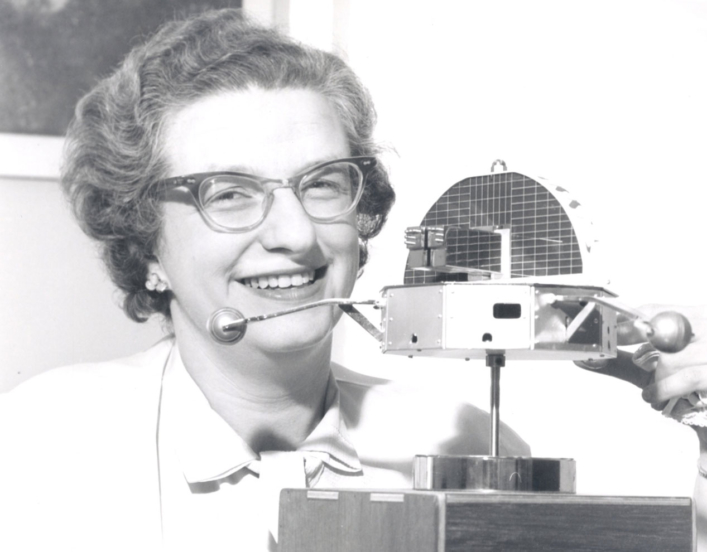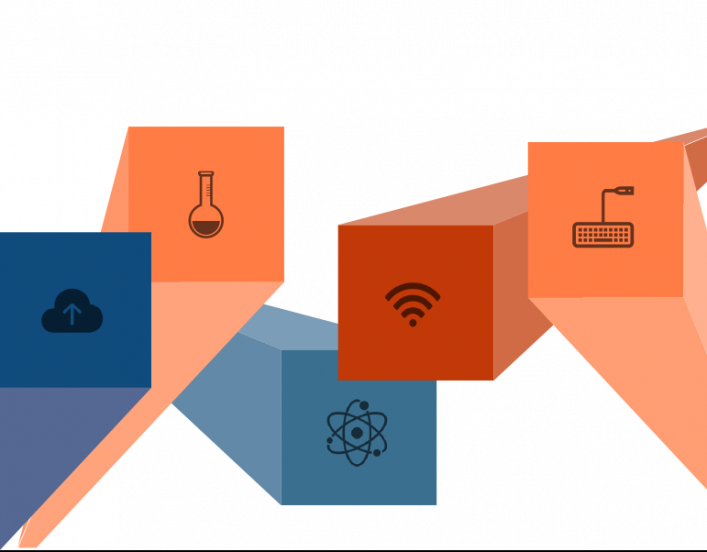Where We Stand: STEM Education
AAUW advocates increased support for and protection of programs that meet the needs of girls and women in elementary, secondary, and postsecondary education, including strong promotion of science, technology, engineering, and math (STEM) education.
Reducing barriers in STEM is a step toward advancing gender equity and increasing America’s global competitiveness. STEM occupations are projected to grow by 10.5% over the 2020-2030 decade, compared to 7.5% for non-STEM jobs. Computer and information technology occupations in particular are estimated to grow by 13% over the same period. The supply of new workers in these fields is struggling to match demand, and women remain severely underrepresented.
Before the passage of Title IX of the Education Amendments of 1972, which prohibits sex discrimination in education, many opportunities to advance in STEM were denied to women. These included participation in some advanced courses as well as math and science clubs. Today, girls and women have made significant gains with increasing participation in STEM courses, particularly in the biological, environmental, and chemical/material sciences. Despite these gains, gender biases remain in STEM at all levels of education and employment. Title IX is an excellent tool to address these issues. However, if we truly intend to meet the needs of the 21st-century economy, we must break down barriers, increase girls’ interest in STEM, and encourage more women to pursue STEM careers.
AAUW in Action
All public policy actions take direction from the AAUW Public Policy Priorities, voted on by members every two years. AAUW is a nonpartisan organization—but nonpartisan does not mean “non-political”. Since its first meeting in 1881, AAUW has been a catalyst for change. Together, through our coordinated and strategic advocacy, we’ve enacted invaluable legislation at the federal, state, and local levels. The 2021-2023 Public Policy priorities directly identify the strong promotion of STEM education for women and girls.
The public policy team engages in many efforts on this key issue, including but not limited to:
- Working in coalition with other gender equity and civil rights organizations, including the Education Task Force of the Leadership Conference on Civil and Human Rights.
- Mobilizing AAUW advocates and members through targeted calls to action on important legislation, like the STEM Opportunities Act and the Gender Equity in Education Act (GEEA).
- Engaging directly with elected leaders and the public through calls, letters to political offices, and comments and testimonies in hearings.
- Providing voter education resources on key equity issues to consider during elections and offering information on how elected officials have voted in the past (more about this and Get Out the Vote guides at the AAUW Action Fund).
The STEM Labor Market Needs Women
Although women make up nearly half of all employees in the U.S. economy, they hold only 28% of STEM jobs. Women are particularly underrepresented in the computing and engineering fields, where they make up 25.2% and 16.5% of workers, respectively. Women of color face an even greater lack of representation, with Black and Hispanic women accounting for only 2% of engineers. If women and underrepresented groups joined the STEM workforce in proportion to their representation in the overall labor force, the STEM worker shortage would disappear.
Elementary and Secondary Education
Gender biases and stereotypes are a significant barrier to girls’ progress in STEM. Early education plays a critical role for girls’ development, setting the stage for their level of interest, confidence, and achievements, particularly in STEM.
Teachers and parents often underestimate girls’ math abilities—biases which are estimated to contribute to around half of the gender achievement gap in math. Many girls lose confidence in math by third grade, and self-assess lower than boys with similar achievement levels. Teachers, too, grade girls harder than boys for the same work and assume girls need to work harder to achieve at the same level as boys. These messages they receive during their K–12 education play a large role in the decisions that students make later in life.
Gaps in women’s pursuit of STEM fields continue into secondary studies. Though girls’ participation and achievement in math and science courses is comparable to boys’, male students are still far more likely to enroll in engineering or AP computer science courses. In 2020, only about 34% of students who took the AP computer science exam were female. Girls’ participation in high school is critical to their pursuit of STEM in higher education—for example, female students who take AP computer science in high school are five times more likely to major in computer science in college. Stereotypes, gender bias, and the sometimes-hostile climates of STEM departments, however, continue to block women’s participation and progress.
Slow Progress in College
Women make up the majority of students enrolled in all sectors of higher education and earn the majority of postsecondary degrees. Yet, women’s underrepresentation in STEM continues through to their postsecondary studies. In 2018, women earned 53% of STEM degrees, but the bulk (85%) were in health-related fields. Women earned only 22% of engineering degrees and 19% of computer science degrees that same year. Community colleges also offer a range of STEM programs leading to associate degrees and certification, but women remain concentrated in programs for traditionally female occupations like nursing, education, and cosmetology.
In fields like computer science and engineering, women more often face harassment and gender bias both on campus and professionally. As fewer women study and work in some areas of STEM, these fields tend to perpetuate exclusionary, male-dominated cultures that are not supportive of—or even hostile to—women and particularly women of color.
Improving Opportunities in STEM
There are many ways to create a lifelong pathway of opportunity for women and girls in STEM:
- Emphasize STEM skills in early education, K–12, and higher education.
- Cultivate girls’ achievement by exposing them to female role models in STEM and encouraging high school girls to take calculus, physics, chemistry, computer science, and engineering classes.
- Include recognition and avoidance of implicit gender bias, awareness of stereotype threat, techniques to improve spatial skills, and ways to promote a growth mind-set in teacher trainings.
- Measure student achievement in STEM disaggregated and cross-tabulated by gender.
- Actively recruit women into STEM majors.
Federal policy can help to close participation and achievement gaps in STEM education and occupations. The STEM Opportunities Act of 2021 (H.R. 204) would identify and address barriers for women and underrepresented groups in STEM, requiring more comprehensive data collection on federal research award grantees and providing guidance to minimize implicit biases in the grant review process. The bill would also authorize grants designed to increase recruitment and retention of underrepresented groups in STEM fields of study and careers.
As an important tool for gender equity in STEM education, Title IX should be strengthened and vigorously enforced. The Gender Equity in Education Act (GEEA) would provide educational entities and Title IX coordinators the resources, training, and technical assistance necessary to ensure equity in education and would establish an Office of Gender Equity in the Department of Education to coordinate interagency enforcement of Title IX. GEEA would also authorize competitive grants to K-12 schools, colleges, local educational agencies, or states to support their gender equity work.
AAUW is committed to promoting opportunities for women and girls in STEM. In 2021, more than 600 teen girls across the U.S. and U.K participated in AAUW’s STEMEd for Girls program, a series of six workshops designed to inform and inspire girls in grades 9-12 on opportunities in STEM. Learn more about our program here.
Related
Closing the STEM Gap
Promote public awareness to parents about how they can encourage daughters as much as sons in math and science – supporting learning opportunities and positive messages.
Nancy Grace Roman: The Life and Legacy of a NASA Star



